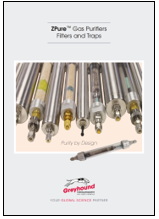Imidacloprid Insecticide
Imidacloprid Solution 100ug/ml in Methanol; PS-2086JS
Imidacloprid is one of the most toxic insecticides to bees. The acute oral LD50 ranges from 0.005 µg a.i./bee to 0.07 µg a.i./bee, which makes imidacloprid more toxic to bees than the organophosphate dimethoate (oral LD50 0.152 µg/bee) or the pyrethroid cypermethrin (oral LD50 0.160 µg/bee).[26] The toxicity of imidacloprid to bees differs from most insecticides in that it is more toxic orally than by contact. The contact acute LD50 is 0.024 µg a.i./bee (micrograms of active ingredient per bee).[27]
Imidacloprid was first widely used in the United States in 1996 as it replaced 3 broad classes of insecticides. In 2006, U.S. commercial migratory beekeepers reported sharp declines in their honey bee colonies. This has happened in the past, however unlike previous losses, adult bees were abandoning their hives. Scientists named this phenomenon colony collapse disorder (CCD). Reports show that beekeepers in most states have been affected by CCD.[28] Although no single factor has been identified as causing CCD, the United States Department of Agriculture (USDA) in their progress report on CCD stated that CCD may be "a syndrome caused by many different factors, working in combination or synergistically."[29] Several studies have found that sub-lethal levels of imidacloprid increase honey bee susceptibility to the pathogen Nosema.[30][31][32]
David Goulson (2012) from the University of Stirling was able to show that trivial effects due to imidacloprid in lab and greenhouse experiments can translate into large effects in the field. The research found that bees consuming the pesticide suffered an 85% loss in the number of queens their nests produced, and a doubling of the number of bees who failed to return from food foraging trips.[7][8]
Lu et al (2012) reported they were able to replicate CCD with sub-lethal doses of imidacloprid. The imidacloprid-treated hives were nearly empty, consistent with CCD, and the authors exclude Varroa or Nosema as contributing causes.[9]
In May 2012, researchers at the University of San Diego released a study that showed that honey bees treated with a small dose of imidacloprid, comparable to what they would receive in nectar and formerly considered a safe amount, became "picky eaters," refusing nectars of lower sweetness and preferring to feed only on sweeter nectar. It was also found that bees exposed to imidacloprid performed the "waggle dance," the movements that bees use to inform hive mates of the location of foraging plants, at a lesser rate.[33]
Researchers from the Canadian Forest Service showed that imidacloprid used on trees at realistic field concentrations decreases leaf litter breakdown due to adverse sub-lethal effects on non-target terrestrial invertebrates. The study did not find significant indication that the invertebrates, which normally decompose leaf litter, preferred non-contaminated leaves, and concluded that the invertebrates could not detect the imidacloprid.[34]
A 2012 in situ study provided strong evidence that exposure to sub-lethal levels of imidacloprid in high fructose corn syrup (HFCS) used to feed honey bees when forage is not available causes bees to exhibit symptoms consistent to CCD 23 weeks post imidacloprid dosing. The researchers suggested that "the observed delayed mortality in honey bees caused by imidacloprid in HFCS is a novel and plausible mechanism for CCD, and should be validated in future studies".[35][36]
Sub-lethal doses (<10 ppb) to aphids have been found to lead to altered behavior, such as wandering and eventual starvation. Very low concentrations also reduced nymph viability.[37]
In January 2013, the European Food Safety Authority stated that neonicotinoids pose an unacceptably high risk to bees, and that the industry-sponsored science upon which regulatory agencies' claims of safety have relied may be flawed, concluding that, "A high acute risk to honey bees was identified from exposure via dust drift for the seed treatment uses in maize, oilseed rape and cereals. A high acute risk was also identified from exposure via residues in nectar and/or pollen."[10] An author of a Science study prompting the EESA review suggested that industry science pertaining to neonicotinoids may have been deliberately deceptive, and the UK Parliament has asked manufacturer Bayer Cropscience to explain discrepancies in evidence they have submitted to an investigation.
CONTACT US
Tel: +44 (0) 151 649 4000
Email: marketing@greyhoundchrom.com
FOLLOW US
YOU MAY ALSO BE INTERESTED IN OUR NEWSLETTER



.jpg)








